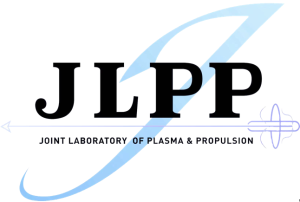A doctoral candidate member in JLPP, Zihao Luo, whose article has been published on Plasma Source Science & Technology. The title of this article is Ignition reliability analysis and optimization of a dual trigger electrode hollow cathode
Abstract:
Ignition performance and reliability of the hollow cathode are critical for electric propulsion systems. A state-of-the-art dual trigger electrode hollow cathode with fast ignition and resistance to poisoning has achieved over 700 d of space applications and hundreds of on-orbit ignitions. To evaluate and optimize the ignition reliability behind the improved ignition performance, parametric analyses of different dual trigger circuits and inner electrode dimensions are conducted using a coupled plasma-thermal model. The dual trigger circuit connects the inner electrode and the keeper in parallel to the ignition power supply, and switches the discharge electrode through a current-limiting resistor on the inner electrode branch. Insufficient current-limiting resistance saturates the inner electrode current, causing the keeper ignition failure, intensified evaporative depletion and sputtering erosion of the emitter through weakened electric field work in the keeper gap, enhanced electron power deposition, and hysteresis drop in emitter sheath potential during plasma diffusion. The insertion of the inner electrode into the emitter cavity overlaps the localized strong electric field at the inner electrode tip with the emission energy injection zone to accelerate the inner electrode ignition, but excessive extension shortens the ion sputtering scan path and exacerbates concentrated erosion downstream. The thin inner electrode attenuates the conductive heat dissipation leading to thermal fatigue or melting of the inner electrode, while the thick inner electrode promotes initial ionization collisions through the narrow electrode gap, resulting in localized intense sputtering erosion of the emitter near the inner electrode tip. Simulations conservatively estimate that the dual trigger electrode hollow cathode is capable of 100 000 h lifetime and 37 500 ignitions. The optimized design for ignition reliability suggests a current-limiting resistance higher than the ratio of ignition voltage to discharge current, and an inner electrode with half the radius of the emitter extending to the emitter cavity entrance.

Spatiotemporal distribution of plasma number density and intense sputtering zone during primary ignition with different
current-limiting resistances.

Plasma number density distribution at the moment of 22.5 ms after primary ignition under different inner electrode insertion lengths.
Link:
Ignition reliability analysis and optimization of a dual trigger electrode hollow cathode
Editor: Lehui Cao
